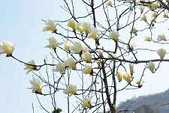一掌之叶:觉知 A Handful of Leaves: Awareness
发布时间:2023-08-16 14:42:47作者:药师网2-1-1-5. A Handful of Leaves: Awareness一掌之叶:觉知
To practice insight-meditation, the Buddha teaches us to develop four foundations of awareness, namely;
在练习观禅(内观禅修)方面,佛陀教导我们培养正念觉知(sati)的四个基础,即——
1. KAYANUPASSANA SATIPATTHANA, that is, to meditate on the body in the body and see according to actuality that this body is only just a body; it's not a being, an individual, nor a self. It is neither me nor it.
1. 身观念处:即以「身体或身内」为所缘而禅修,并且如实见到身体只是身体,不是实有、不是实体、也不是自我,它既非我亦非它。
2. VEDANANUPASSANA SATIPATTHANA, to meditate on the feelings and see according to actuality that these feelings are only just feelings; they are not a being, an individual, nor a self. They are neither me nor them.
2. 受观念处:以「觉受」为所缘而禅修,并且如实见到这些觉受只是觉受,不是实有、不是实体、也不是自我,它们也是非自非它。
3. CITTANUPASSANA SATIPATTHANA, to meditate on the mind in the mind and seeing according to actuality that this mind is only just mind; it is not a being, an individual, nor a self. It is neither me nor it.
3. 心观念处:以「心」为所缘而禅修,并且如实见到心只是心,不是实有、不是实体、也不是自我,它既非我亦非它。
4. DHAMMANUPASSANA SATIPATTHANA, to meditate on the mental objects in the mental objects and seeing according to actuality that these mental objects are only just mental objects. They are not a being, an individual, nor a self. They are neither me not them.
4. 法观念处:以「法(mental object)」为所缘而禅修,并且如实见到这些法只是法,不是实有、不是实体、也不是自我,它们既非我亦非它。
The teachings of the Buddha are many; I'm not able to describe all of it. We've probably heard that at one time, our Buddha was walking with a number of monks in the forest. Seeing fallen leaves scattered around, the Buddha picked up a handful of leaves and asked those bhikkhus, 'Monks, which is more, the leaves in my hand or all the leaves in the forest?' The bhikkhus answered, 'The leaves in the forest are more than those in your hand, so much so that they cannot be compared.' The Buddha then taught that the knowledge and understanding that the Buddha had studied was comparable to the leaves in the forest, and the knowledge that He taught us was comparable to a handful of leaves.
佛陀的教导有很多,我无法介绍他所有的教导。大家可能听过:有一次,佛陀与一群此丘在森林中行走,佛陀看到满地都是落叶,于是拣起一把的叶子问那些比丘们:「比丘们!哪个比较多呢?是我手上的叶子多,还是森林里所有的叶子多呢?」那些比丘们回答:「森林里的叶子比你手中的多,而且多到不能比。」于是佛陀教导说:佛陀学过的知识和智能就像森林里的叶子那么多,而他教导我们的就像手中的叶子那么少。
The leaves in the forest stand for making merit, generosity, keeping precepts and developing tranquility-meditation, and the handful of leaves for insight-meditation. However, to do Vipassana we have to study through listening and reading at first, before we start practicing. Otherwise we'll waste a lot of time gathering all the leaves in the forest.
森林里的叶子就是指做功德、布施、持戒和练习止禅,而手中的叶子就是指观禅(内观禅修)。然而,在练习毘婆舍那之前,我们必须先听闻并阅读经典,否则会浪费很多时间在收集森林里的叶子。
The practice of Vipassana that the Buddha teaches through developing the four Satipatthana, means learning to be aware. The Buddha said that there are two things that are of great assistance, namely 1. SATI: to recollect; * before doing or thinking anything, know it with awareness, and 2. SAMPAJANYA: to realize; the moment we're thinking something, to realize it fully. SATI-SAMPAJANYA, when using ordinary language, just means to wake up, to awaken, to feel oneself all the time.
佛陀教导的藉由培养四种念住(Satipathana)而修的毘婆舍那,也就是要练习保持觉知。佛陀说有两样东西能产生大帮助,那就是——
1. 正念(Sati):即忆念不失*,也就是在做或想任何事情之前,要有觉知地知道它。

2. 正知(Sampajanya):即了知,也就是在我们想事情的当下完全地了知它。
正念-正知,用一般的话来说就是清醒、觉醒、随时感知到自己(的身口意活动)。



